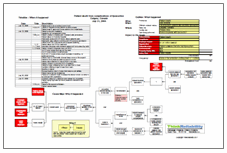The headline probably isn’t shocking to anyone who’s woken up the next morning with a pounding headache and dry mouth. Clearly one’s performance at work is going to be impacted by a night of unabated drinking. However a recent Irish study, published this month in the Archives of Surgery, show surprising results regarding the lingering effect of alcohol consumption. Their findings show that well into the day surgeons are more likely to make mistakes.
Modern surgical techniques, including laparoscopic surgery, require great manual dexterity and control as well as sustained mental focus. It is common knowledge that both of these skills are impaired while intoxicated. What is unknown is how these skills are impaired after one is no longer intoxicated, but obviously still affected. In all but one test subject, their blood alcohol content (BAC) had returned to 0.00%. Initial testing done in the morning showed no significant difference between test and control subjects, however later in the day there was a perceptible decline. While the study was only a preliminary one, it indicates that more research is needed in this area.
 A Cause Map can be especially helpful in a research environment because it helps define causal relationships. In this case, the researchers focused on the effects of drinking the night previous. But perhaps there are other reasons at play, such as fatigue, which contribute to the effect. When searching for causes it is important not to focus in on one aspect, ignoring others, since all causes are required to produce an effect.
A Cause Map can be especially helpful in a research environment because it helps define causal relationships. In this case, the researchers focused on the effects of drinking the night previous. But perhaps there are other reasons at play, such as fatigue, which contribute to the effect. When searching for causes it is important not to focus in on one aspect, ignoring others, since all causes are required to produce an effect.
It is expected that surgeons wouldn’t actually drink while at work. However, there are surprisingly no guidelines about when they should stop drinking beforehand. Pilots are federally mandated not to drink at least 8 hours prior to flying or fly with a blood alcohol content (BAC) of .04% or greater. Perhaps this study will generate an overdue discussion on the need for abstention prior to surgery. Potential solutions, such as training or regulations, can be displayed directly on the Cause Map above the appropriate cause.









